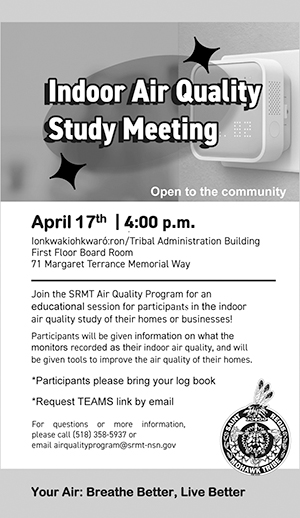News from around the Nations
Iqaluit, Nunavut, Canada
Students from across Nunavut, Northwest Territories and Yukon are participating in Get Reel, a video campaign to create anti-tobacco ads, as part of this year’s pan-territorial Smoke Screening initiative. For the eighth year, the governments of Nunavut, Northwest Territories and Yukon are promoting this educational anti-tobacco program for youth, Smoke Screening 8, which exposes students to international and local northern anti-tobacco messages through film and social media. A new hands-on component this year is the Get Reel competition that involves students in Grades 6 to 12 filming and editing their personal anti-tobacco advertising messages. Students from Nunavut, Northwest Territories and Yukon will be able to view their submissions alongside those of other students from across the three territories, as well as the international television ads that make up the program. In addition to the new video component of the program, educators in northern schools will work with students to discuss the harmful effects of tobacco, review anti-tobacco advertisements from around the world and vote on their favorite international ad. The best advertisement, as voted by the students, will be aired on northern television.
Bemidji Ojibwe, Minnesota, United States
The Bemidji School District has jumped on the Bemidji Ojibwe Language Project bandwagon. Soon Ojibwe/English signage will hang throughout the district’s schools. Machine tool students at the high school in Bemidji, Minnesota volunteered to make the 300 signs on their school machines, helping to cut the cost of the project down from $10,000 to just over $2,000. Anton Treuer, Bemidji State University professor of Ojibwe, also helped defray the cost of the signage by donating $1,000 he won from the St. Paul Foundation when he was honored with a Facing Race Ambassador Award in March.
Bingwi Neyaashi Anishnaabek First Nation, Ontario, Canada
Aboriginal Affairs and Northern Development Canada announced the entry of Bingwi Neyaashi Anishinaabek First Nation (BNA) into the Framework Agreement on First Nations Land Management. Led by Chief Paul Gladu, BNA has been working diligently towards the development of a new and innovative community master plan. For BNA, the announcement that it is to be accepted under the Framework Agreement on First Nations Land Management (Framework Agreement) could not have come at a better time as only 20 short months ago, the community received their official reserve status through an Order in Council. With the entry of the BNA Framework Agreement process, the First Nation can now maximize their opportunities in the completion of their comprehensive planning and address the associated challenges of implementation head on. The Framework Agreement will give BNA the authority to create its own Land Code and land laws in the development of its reserve lands, natural resources and revenues from its reserve land base. This new mandate will greatly improve the bureaucratic efficiency of the First Nation to act in a manner which reflects both the vision of their leadership and the needs of their members as they move forward. It will also give BNA the power to direct lands and economic development within their reserve base by replacing the previous two-step administrative process which saw AANDC initially review all potential projects prior to BNA’s ability to make real-time decisions and act upon them.
Indigenous people of Southeast Mexico
The global interest in the interpretations that the Mayan calendar predicted horrific catastrophes on December 21, 2012 might not sound like a tourism draw for Mexico, but that’s exactly what it appears to be. And the indigenous people of southeast Mexico are demanding inclusion in the official programs planned for this year aimed at taking advantage of this interest. Indigenous organizations are resentful that they were excluded from the design process of the Maya World promotion plan that was launched by the Mexican government on Jan. 16. The promotion hopes to lure domestic and foreign tourists to the indigenous regions that hold dozens of ruins of ancient Mayan cities which are scattered in five southeast states. The Mexican government’s slight against the Indigenous organizations isn’t the only issue—there is also the concern of potential damage and contamination to these sacred Mayan sites. The Mexican Tourism Department said it would spend $8 million promoting tourism to the “Mayan World,” an area in southeast Mexico that extends to Belize, Guatemala, El Salvador and Honduras. Tourism Secretary Gloria Guevara said that she expects 52 million tourists over the 1 1/2 years of the plan, which would be 12 million more than usual.
Clayoquot Sound, British Columbia, Canada
The B.C. government has received an application for cut blocks in the old growth rainforest of Flores Island in Clayoquot Sound, a UNESCO Biosphere Reserve that was the site of the largest civil disobedience protest in Canada’s history in 1993. More than 130 scientists across North America have just signed a declaration calling for permanent protection of Clayoquot’s remaining intact old-growth rainforests. A new Sierra Club BC map shows that only 21 of Vancouver Island’s 282 major rainforest watersheds are unlogged. Of the seven unlogged Vancouver Island watersheds that lack permanent protection, five are in Clayoquot Sound, including on Flores Island. Clayoquot was designated a United Nations Biosphere Reserve in 2000, but that designation does not confer legal protection. A 1999 Memorandum of Understanding, signed by First Nations and environmental groups, outlined intact rainforest valleys in Clayoquot deserving protection, including the valley now slated for logging on Flores Island, north of Tofino. Yet those valleys are still unprotected.
University of Manitoba, Canada
The world’s first research space dedicated to bringing scholars and Indigenous communities together to create an innovative understanding of Indigenous governance and solutions for political decolonization opened its doors to the public on Jan. 18, 2012. Mamawipawin, a Cree word that roughly means “the space where we gather”, has an architectural design that reflects critical Indigenous teachings about community, individuality, research and life. It also has a ventilation system to support Indigenous research protocols like smudging ceremonies. It is a physical, a technological, and an intellectual space which will enable both discussions of, and potentially the realization of, resurgence, resistance and transformation in Indigenous politics. It is a space that promotes new thinking about research, generative methodological transformations, and finding new ways of doing research with Indigenous peoples around the world. The University of Manitoba has a goal of establishing itself as a national centre of excellence in Aboriginal education and this research space will provide great opportunities for Aboriginal students, scholars and community members. Mamawipawin or the Indigenous Governance and Community Based Research Space was through funding from the Canadian Foundation for Innovation (CFI), the Manitoba Research and Innovation Fund (MRIF), the University of Manitoba, and with support from Apple.







Reader Comments(0)